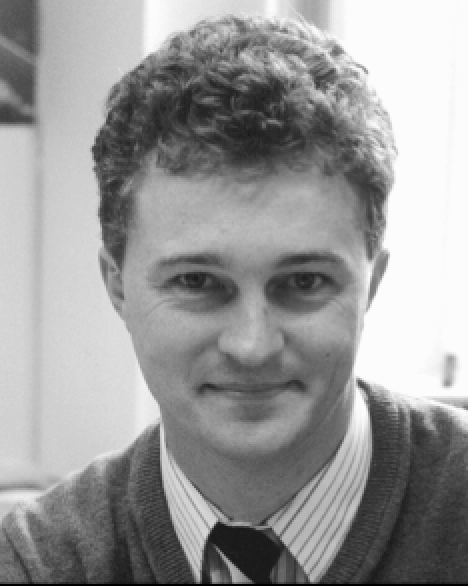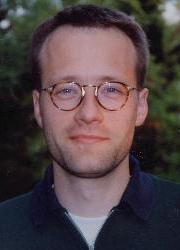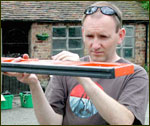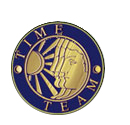|
Theory
and Practice of Computer Graphics 2003
|
||
|
Organised
by EGUK
|
||
|
Key note speakers: |
||
Conference
Keynote Speakers
|
The Need for Realism: Graphics and Archaeology Recent developments
in computer graphics are providing powerful tools to help archaeologists
investigate the multi-dimensional aspects of data they have gathered.
Computer graphics techniques can be used to reconstruct and visualise
features of ancient environments which may otherwise be difficult
to appreciate. However, if we are to avoid the very real danger
of misrepresenting the past, then the computer generated images
should not only look ``real'', they must also simulate very accurately
all the physical evidence for the the site being considered. This paper discusses the application of high fidelity computer graphics with respect to the ``real'' archaeological scenes they are intended to depict. |
Biographical Sketch: Alan Chalmers is a Reader in the Department of Computer Science at the University of Bristol. He has published over 90 papers in journals and international conferences on high fidelity graphics. He is a former Vice President of ACM SIGGRAPH. His research is investigating the use of very realistic graphics in the accurate visualisation of archaeological site reconstructions and techniques which can be used to reduce overall computation time of high quality images without reducing the perceptual quality of the images. ArchLight Director. Current Research Interests: Very realistic graphics, Visual perception, Archaeological site reconstructions, Presence in virtual environments, Parallel processing. |
|
|
|
Freeform Shape Representations for Efficient Geometry Processing Abstract: The most important concepts for the handling and storage of freeform shapes in geometry processing applications are parametric representations and volumetric representations. Both have their specific advantages and drawbacks. While the algebraic complexity of volumetric representations S = {(x,y,z) | f(x,y,z) = 0} is independent from the shape complexity, the domain D of a parametric representation f : D -> S usually has to have the same structure as the surface S itself (which sometimes makes is necessary to update the domain when the surface is modified). On the other hand, the topology of a parametrically defined surface can be controlled explicitly while in a volumetric representation, the surface topology can change accidentally during deformation. A volumetric representation reduces distance queries o inside/outside tests to mere function evaluations but the geodesic neighborhood relation between surface points is difficult to resolve. As a consequence, it seems promising to combine parametric and volumetric representations to effectively exploit both advantages. In this talk, a number of projects is presented and discussed where such a combination leads to efficient and numerically stable algorithms for the solution of various geometry processing tasks. Applications include global error control for mesh decimation and smoothing, topology control for level-set surfaces, and multiresolution editing without local self-intersections. |
Biographical Sketch: Leif P. Kobbelt is a full professor and the head of the Computer Graphics group at the Aachen University of Technology, Germany. His research interests include all areas of Computer Graphics and Geometry Processing with a focus on multiresolution and free-form modeling as well as the efficient handling of polygonal mesh data. He was a senior researcher at the Max-Planck-Institute for Computer Sciences in Saarbruücken, Germany from 1999 to 2000 and received his Habilitation degree from the University of Erlangen, Germany where he worked from 1996 to 1999. In 1995/96 he spent a post-doc year at the University of Wisconsin, Madison. He received his master's (1992) and Ph.D. (1994) degrees from the University of Karlsruhe, Germany. |
|
|
Title
of talk: There
are few more rewarding experiences than confidently predicting to
over 3 million people what is buried under the ground, watching
the 'ground truth' appear..and being thrust back in front of the
cameras to spontaneous applause. Anyway, less of my dreams, the
reality of TV archaeology is usually very different and does not
always end to great acclaim.
|
Biographical Sketch: Chris has worked in geophysics since 1983, including extensive site-based experience in the UK, Greece and the former Yugoslavia. In 1989, he formed a partnership with John Gater at GSB Prospection. He, too, is an associate editor of the Journal of Archaeological Prospection. Chris has worked on the Time Team digs. Athelney was probably his favourite Time Team dig ('a cracker'), but he also remembers Tockenham – the site of a Roman villa in Wiltshire – fondly: 'It was huge. The scale of the results was never really captured on the programme. Everything was really clear, and for once on Time Team, the gradiometry worked well – usually it's only resistance that does, unlike 90% of our other work.' The excavation in Maryland was also memorable: 'It was amazing how the remains of the first brick-built building in Maryland just popped out. This happened on the first morning of the first day, which made the rest of the dig fairly anti-climactic for us but got everyone else off to a running start.' Chris' ideal site is a monastery: 'Monastic sites conform to certain patterns, and are nice and simple and very clear.' However, he admits that simplicity and clarity are not the words that he would use to describe the geophysics team's experience. |
| Local Speaker | ||
|
Three
dimensional visualisation in archaeology fact or fiction? The binocular
vision enjoyed by humans means that we perceive our world in three
dimensions. Until comparatively recently |



